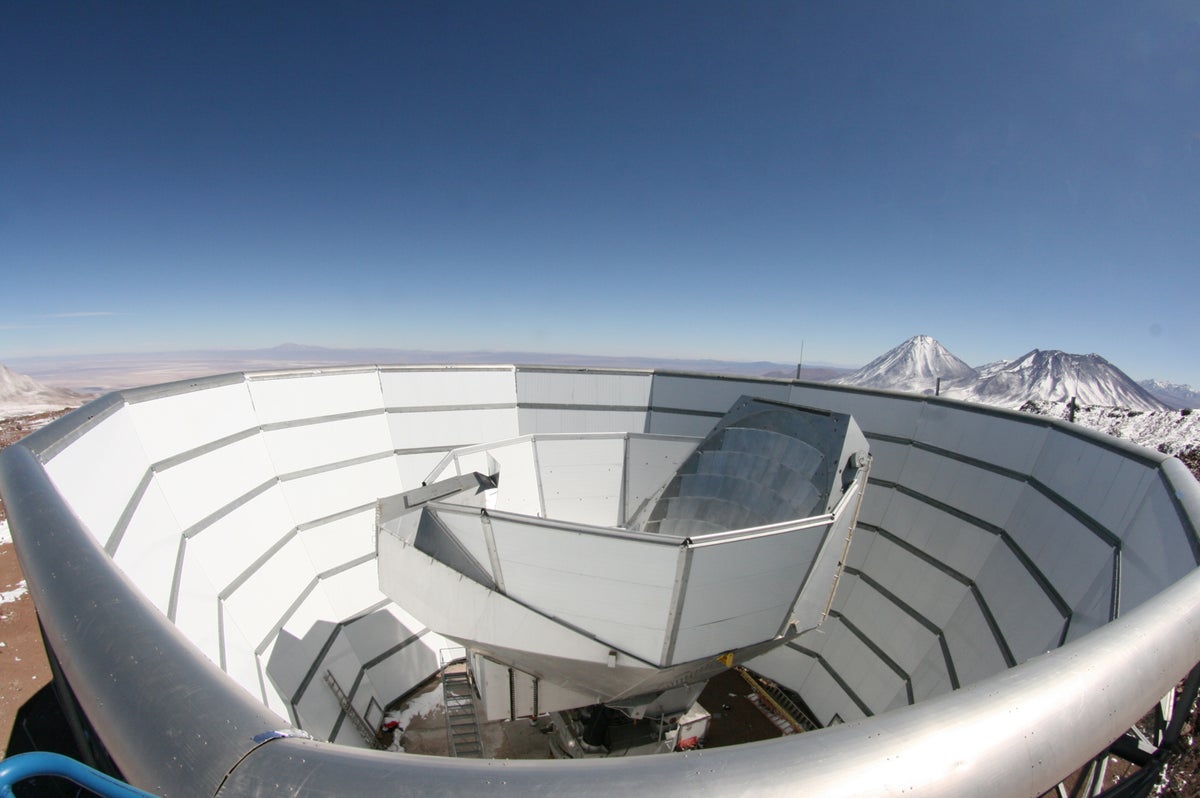Best-Yet ‘Baby Pictures’ of the Universe Unveiled
Sometimes, a picture can be worth much more than a thousand words. For instance, one measure associated with the pictures below—new high-definition snapshots of the cosmos in its infancy—is 1,900 “zetta-suns.”
If you’re enjoying this article, consider supporting our award-winning journalism by subscribing. By purchasing a subscription you are helping to ensure the future of impactful stories about the discoveries and ideas shaping our world today.
ACT observed the big bang’s afterglow, the cosmic microwave background (CMB), which was emitted when the universe was just 380,000 years old. Back then the cosmos was essentially a fireball, an expanding bubble of plasma as hot—and as opaque—as the surface of the sun. This opacity makes the CMB’s light the oldest that anyone can ever see. Building on past CMB surveys (such as that of the European Space Agency’s Planck satellite), ACT measured the intensity and polarization of the light emitted by this material with unprecedented sharpness and sensitivity. These values were then translated into estimates of the temperature, density and velocity of the swirling primordial stuff from which galaxies and larger cosmic structures would eventually coalesce. Those estimates in turn let ACT’s researchers effectively gauge the sum of all things and the way they came together.
Of the staggering 1,900 zetta-sun quantity the researchers came up with, only 100 zetta-suns come from normal matter: hydrogen makes up three quarters of the latter figure, and helium comprises the rest of it. Both of these elements emerged in the immediate aftermath of the big bang. All the rest of the elements—the carbon in your cells, the calcium in your bones, the oxygen you breathe and even the gold in your jewelry—showed up much later, after the ignition of the first stars, and are akin to a rounding error, just a meager sheen upon the greater cosmic ocean.
Of the remaining 1,800 zetta-suns’ worth of material out there, 500 zetta-suns represent dark matter, the invisible substance that serves as gravitational glue that holds galaxies together. But the bulk, some 1,300 zetta-suns, comes from the density of dark energy, the mysterious force that’s powering an acceleration in the rate of cosmic expansion. So most of the universe’s “stuff” is actually in the form of things for which we only have placeholder names—and a very limited understanding.
Planck’s results had already suggested a similar conclusion. But with ACT’s five-times-higher resolution and three-times-greater sensitivity to polarization, researchers hoped to see signs of new physics beyond Lambda-CDM that its predecessor might have missed. “We came into this thinking the detailed patterns we’d see in ACT’s polarization data would reveal something about alternative cosmic models,” Dunkley says.
And it did—but not exactly as hoped.
“The [Lambda-CDM] model just matches perfectly with all our data, which is pretty amazing, actually—that we’re able to look back to this earliest observable time, and this simple model is still working,” Dunkley says. “Something’s still missing from our understanding; we don’t know what dark matter and dark energy are, for example. But this result is important because it’s showing us that a lot of other things that could’ve made the universe more complicated aren’t happening. The early universe doesn’t seem to be where our problem lies.”
Lee Billings is a science journalist specializing in astronomy, physics, planetary science, and spaceflight, and is a senior editor at Scientific American. He is the author of a critically acclaimed book, Five Billion Years of Solitude: the Search for Life Among the Stars, which in 2014 won a Science Communication Award from the American Institute of Physics. In addition to his work for Scientific American, Billings’s writing has appeared in the New York Times, the Wall Street Journal, the Boston Globe, Wired, New Scientist, Popular Science, and many other publications. A dynamic public speaker, Billings has given invited talks for NASA’s Jet Propulsion Laboratory and Google, and has served as M.C. for events held by National Geographic, the Breakthrough Prize Foundation, Pioneer Works, and various other organizations.
Billings joined Scientific American in 2014, and previously worked as a staff editor at SEED magazine. He holds a B.A. in journalism from the University of Minnesota.
Source: www.scientificamerican.com
